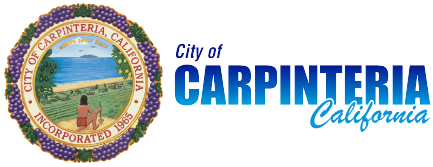What is Integrated Pest Management (IPM)?
- An approach to reduce or eliminate pests by using gradually fewer chemical means. It results in the use of the
least toxic yet effective method of pest control. - UC Statewide IPM Program defines it as: An ecosystem-based strategy that focuses on long-term prevention of
pests or their damage through a combination of techniques such as biological control, mechanical control,
habitat manipulation, modification of cultural practices, and use of resistant plant species. - The goal of the IPM is to bring all areas to a “monitored and managed” state. Prevention is the best control.
Definition of pests:
Insects, weeds, disease organisms, and mammals that are harmful to landscapes, crops, facilities, or urban-wildland interface
What are the goals of an IPM program?
From USDA, “IPM practitioners use knowledge of pest and host biology in combination with biological and environmental monitoring to respond to pest problems with management tactics designed to:
- prevent unacceptable levels of pest damage;
- minimize the risk to people, property, infrastructure, natural resources, and the environment; and
- reduce the evolution of pest resistance to pesticides and other pest management practices.”
Ideally, the end result is no need, no use of pesticides.
How to implement an IPM program?
Identify the Pest
Most species are NOT pests and are contributing members of the broader ecosystem. Taking the time to identify the pest can eliminate a lot of unnecessary pest control efforts.
Monitor Pest Activity
Through monitoring, you can determine if there are sufficient numbers of pests present to be concerned about damage. Pest populations might decline due to natural forces or pest populations might be passing through, doing no harm. Monitoring ensures that unnecessary treatments are avoided.
Determine Action Thresholds
An action threshold is the point at which further damage is considered intolerable and some kind of pest control action is needed. There can be different criteria required for action thresholds. There are many models out there that can help determine the point at which economic damage becomes unacceptable.
Explore Treatment Options and Take Action
Prevention should always be considered first. Using Best Management Practices (BMPs) can be helpful in prevention.
If pesticides are deemed necessary, priority should be given to treatments that are highly targeted to the pest organism and to pesticides that are least-toxic to human health and the environment.

Evaluate Results
Monitoring after treatments is how you know if the treatment was effective or not. No further treatments are necessary unless monitoring suggests otherwise.
City of Carpinteria adopted an IPM policy in 2012. In 2020, Tiffany Smith, the City’s Parks and Facilities Supervisor, came aboard to evaluate the health of Carpinteria’s parks. Carpinteria was challenged by the years-long drought. The parks had gopher infestations, noxious weed infestations, struggling turf and plants, and little use of preventative measures, such as mulching. Any pest issue, left unmanaged, was growing exponentially. Ensuring safety in the parks, improving plant and tree health, restoring the goals and objectives of the IPM program and enhancing the appeal and beauty of our Parks was prioritized.
The city’s landscapes were faced with multiple challenges as the comprehensive landscape program began. It was a big job to get everything healthy, safe and managed while implementing IPM practices. Looking at the treatment hierarchy above, most pest problems were already past the “action thresholds” of prevention or cultural as a treatment. The first objective was to reduce or eliminate infestations while creating cultural control by improving the health of the landscapes.
In four years, the parks and grounds have seen progress: improved, repaired and redesigned irrigation; removed plants that were too unhealthy or just “wrong plant, wrong place;” improved turf health; mulching as a weed preventative. The last two rain seasons have been a miracle! There are park trees that probably would not have made it through another drought year. Along with greatly improved health of plants and trees, comes the price of crazy amounts of weeds from the latent seedbanks. With the rain, the priority for weeds is too not let them establish and certainly prevent infestations.
In summary, the goals are to be pesticide free (exceptions for some insects and resistant weeds); have safe, beautiful and healthy parks for everyone to enjoy; and reach out to Carpinteria residents with education about IPM and reducing or eliminating pesticide use.
Where do you spray pesticides? Is this something to be concerned about when visiting a park?
The City’s crew is directed to only spray outlying areas, some hardscape edges and in tree wells and planters where people are not occupying. The City does not spray playsets or park tables.
Will using pesticide cause runoff and infect local creeks?
The City does not use pesticides near creeks. When using pesticides, the City does not spray enough to cause runoff before the pesticide dries nor does the City spray before a rain event. The products used typically have a dry time of minutes to an hour and are considered rain fast after two hours.
Are you required to post signs where you spray?
Following the Department of Pesticide Regulation standards, it is not required to post non-restricted pesticide use at city properties. The regulations regarding posting are for farms/fields and for schools. According the the City’s IPM policy, however, the areas should be posted two days prior.
Contact Information
Tiffany Smith
Parks and Facilities Maintenance Supervisor
tiffanys@carpinteriaca.gov
For Service Requests
Use the City’s new system and get live updates!

 © 2024 City of Carpinteria. All Rights Reserved.
© 2024 City of Carpinteria. All Rights Reserved.